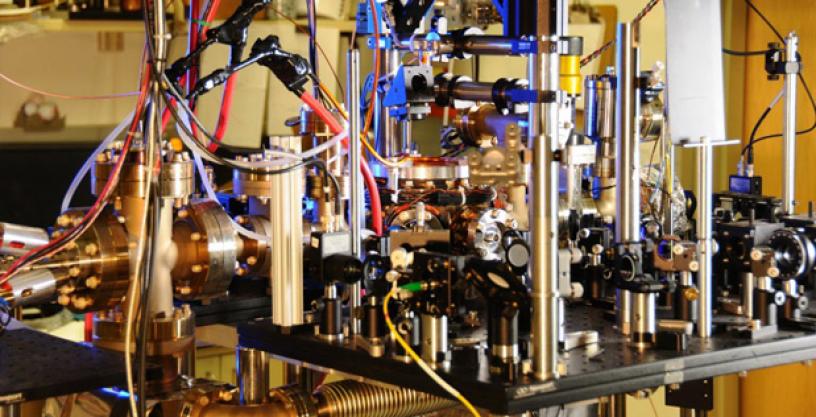
World’s most precise clock could enable new applications in sensing, navigation and physics
Aug 29, 2013
Researchers from the National Institute of Standards and Technology (NIST), with funding from DARPA’s Quantum-Assisted Sensing and Readout (QuASAR) program, have built a pair of ytterbium atomic clocks that measure time with a precision that is approximately ten times better than the world’s previous best clocks, also developed under QuASAR. How good are they? The record-setting clocks are stable to within less than two parts per quintillion (1 followed by 18 zeros). They measure time so precisely that their readout would be equivalent to specifying the Earth’s diameter to less than the width of a single atom or the age of the known universe to less than one second.
As reported in the Aug. 22 issue of Science Express, the QuASAR team built two optical lattice clocks that use ultracold ytterbium atoms to measure the passage of time. Much like the ticking of a pocket watch, the ytterbium clocks tick off seconds by measuring the frequency of light absorbed by atoms as electrons in the ground state jump to an excited state. Each of the clocks relies on approximately 10,000 rare-earth ytterbium atoms cooled to ten millionths of a degree above absolute zero and trapped in an optical lattice made of laser light. Another laser provides the resonant energy necessary for the atoms to cycle between two energy levels a rate of 518 trillion times per second.
How can the Department of Defense take advantage of clocks that are precise to one second in a period comparable to the age of the universe? Currently, the QuASAR work is exploring the limits of just how precisely time can be measured, but it could also practically impact high-performance timing applications such as GPS position and time dissemination. The QuASAR clocks offer performance that is 10,000 times better than the current atomic clocks used to support GPS satellites. This extreme stability could vastly extend the time between clock updates and may obviate attempts by an adversary to spoof GPS signals. Such clock precision could also enable new, more precise methods to measure gravity, magnetic fields and temperature.
The clocks’ precision performance raises a technical issue: it exceeds DoD’s ability to transfer time among devices for purposes of synchronization. It’s not currently feasible to embed atomic clocks in all of the devices that could benefit from ultraprecise timekeeping, so DoD uses various technologies to broadcast time from several master clocks. DARPA’s PULSE program, a companion program to QuASAR, is exploring how laser technology can be improved to facilitate optical time transfer among devices so that they can benefit from the improved timekeeping.
“The QuASAR program operates across multiple research tracks so that DARPA can simultaneously push to the fundamental limits of metrology while also developing practical measurement tools that broadly address defense challenges in precision navigation and timing, functional materials, and biological sciences,” said Jamil Abo-Shaeer, DARPA program manager for QuASAR. “The methods and tools we’re developing could improve upon existing systems such as GPS and potentially enable entirely new areas of research and development.”
DARPA plans to continue to develop rare-earth based optical atomic clocks. Next steps will involve improving precision by adding more ytterbium atoms, combining the two into one unit and repackaging the technology to support operational deployment.
# # #
Associated images posted on www.darpa.mil may be reused according to the terms of the DARPA User Agreement, available here: http://www.darpa.mil/policy/usage-policy.
